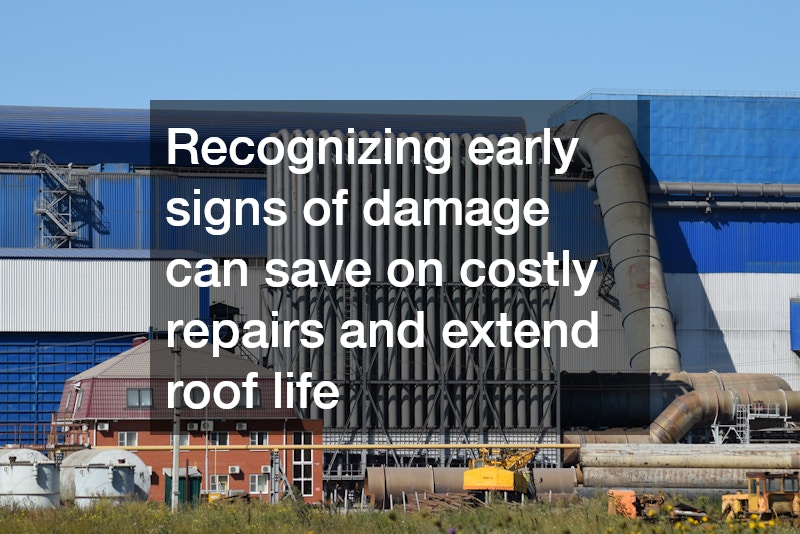It is crucial to understand these essential insights into maintaining commercial roofing to ensure longevity and efficiency. Find answers to common concerns and learn professional tips to enhance the lifespan of your roof.
A strong roof is one of the most important elements of any commercial building, serving as the first line of defense against weather, protecting valuable assets, and contributing to the overall efficiency of the property. Unlike residential roofs, commercial roofing systems are often larger, more complex, and subject to stricter building codes and performance standards.
Choosing the right materials and ensuring proper installation can make a significant difference in durability, energy savings, and long-term maintenance costs. For business owners and property managers, understanding the importance of quality commercial roofing is not just about safeguarding a structure—it’s about protecting investments, employees, and operations as a whole.
The Most Common Types of Commercial Roofing
Understanding the variety of roofing systems available is crucial for effective maintenance strategies. Commercial roofs come in several types, including flat, low-slope, and pitched roofing. Each type has its own unique characteristics and maintenance requirements, which should be closely considered by property owners.
The most prevalent roofing systems include TPO (Thermoplastic Olefin), EPDM (Ethylene Propylene Diene Monomer), and PVC (Polyvinyl Chloride). These materials are chosen based on their durability, energy efficiency, and overall cost-effectiveness. Knowing the specific roofing system in place will help in determining the appropriate maintenance techniques.
Moreover, understanding the material composition can guide you in selecting the right cleaning products and repair methods. Each roofing system also varies in lifespan and susceptibility to environmental factors, influencing maintenance frequency and techniques.
The Frequency of Inspection
Regular inspections play a key role in identifying and addressing potential issues before they escalate. It is generally recommended that commercial roofs undergo inspection at least twice a year. Seasonal changes, particularly before the rainy season and after winter, can greatly impact the condition of a roof.
In addition to scheduled inspections, roofs should also be checked after severe weather events, such as heavy storms or hail. Damage may not always be immediately visible, and early detection can save significant repair costs. Many property owners might underestimate the importance of post-storm inspections, yet they are crucial for roof integrity.
Inspections should be conducted by professionals who can accurately assess the condition of the roofing material and identify vulnerabilities. Hiring experienced contractors ensures that every aspect of the roof is examined, from drainage systems to flashing and seams, thus maintaining its longevity.
The Key Signs of Roof Damage
Recognizing early signs of damage can save on costly repairs and extend roof life. Common indicators include water stains on ceilings and walls, which suggest leaks. Additionally, pooling water on flat rooftops can lead to severe structural damage over time.
Another red flag is the presence of missing or damaged shingles, as well as cracked or blistering roofing membranes. These issues not only compromise the roof’s integrity but may also lead to mold growth and decreased energy efficiency, undermining its performance.
Moreover, any visible sagging or uneven surfaces should be addressed promptly, as they often indicate underlying problems. Regular roof assessments help catch these issues before they escalate, contributing greatly to the roof’s durability and maintenance needs.
The Essentials of Maintenance
Regular maintenance tasks should be prioritized for the longevity and performance of the roof. Cleaning gutters and downspouts is essential to prevent water backup that can lead to leakage. Accumulated debris can obstruct water flow and create a breeding ground for pests.
Another crucial task is repairing any identified damage immediately. Small cracks and holes can often be fixed quickly, but if neglected, they can lead to larger problems requiring expensive repairs. Proper sealing and patching of these vulnerable areas can significantly enhance the lifespan of the roofing system.
Additionally, regular maintenance should include checking insulation and ventilation systems. Poor ventilation can lead to heat buildup, while insufficient insulation can increase energy costs. Both factors are integral to maintaining a healthy and efficient commercial roof.
The Right Way to Choose a Roofing Contractor
Selecting a quality contractor is vital for proper installation and ongoing maintenance of your commercial roof. Start by gathering recommendations from other business owners, as firsthand experiences can provide valuable insight. It’s also important to verify the contractor’s licensing and insurance, ensuring they meet local regulations and are covered for any potential damages.
Evaluating the contractor’s portfolio and previous projects can offer a glimpse into their craftsmanship and reliability. Look for reviews and ratings online, focusing especially on their responsiveness and customer service. A contractor who values communication and transparency will likely provide the best experience.
Lastly, obtaining detailed quotes from multiple contractors allows for better comparison and informed decision-making. This approach not only helps you assess budget implications but also empowers you to discuss the scope of work and inquire about any warranties offered, further safeguarding your investment.
Maintaining your commercial roofing is an investment in the longevity of your property. By following the professional tips outlined in this article, you can effectively manage and care for your roofing system, ensuring its durability for years to come. Regular maintenance, timely inspections, and prudent decision-making are pivotal to protecting this essential asset.



